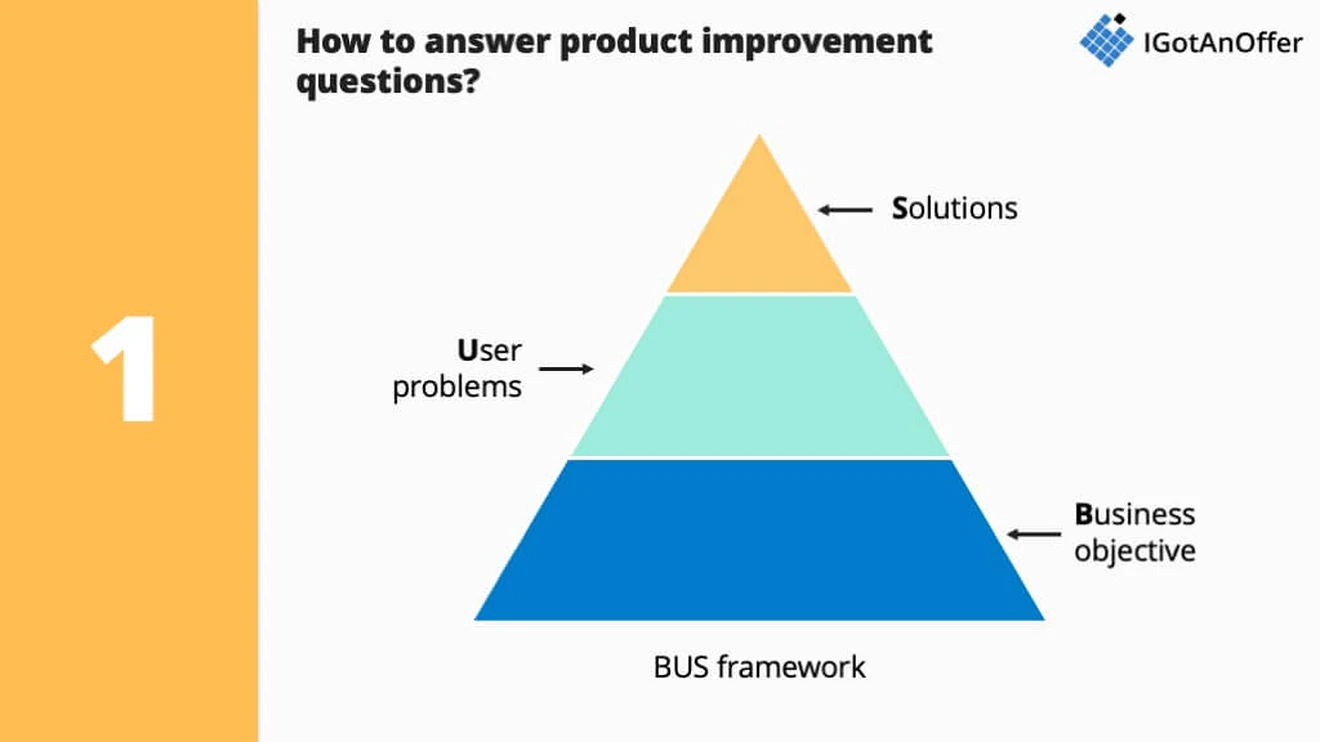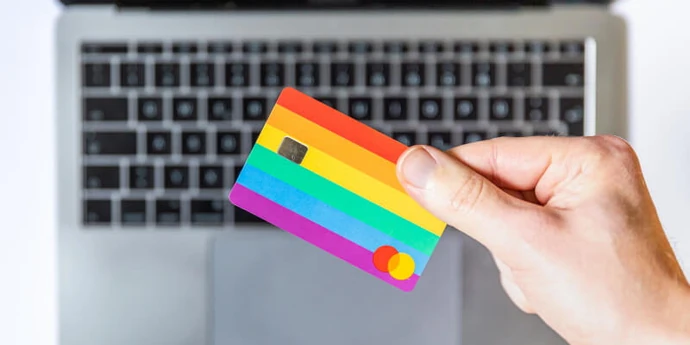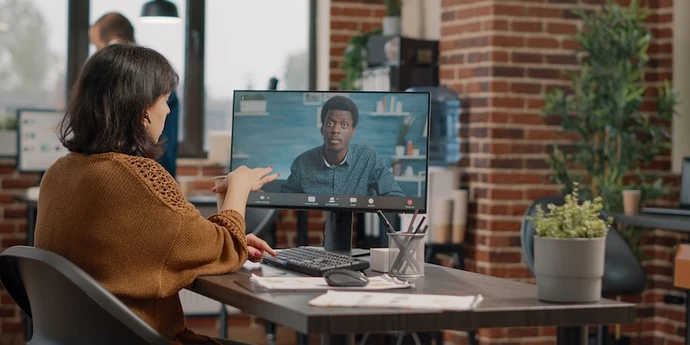Product improvement questions are common in product manager interviews at firms like Google, Meta, and Amazon. For instance, your interviewer might ask, "How would you improve Google Maps?"
These questions can feel really unsettling at first. The good news is that if you know how to approach them they can become fairly easy to answer. So let's step through our recommended approach as well as a few examples to help you prepare for your interview.
- How to answer product improvement questions
- Example - How would you improve Facebook?
- List of practice questions
- How to practice product improvement questions
Click here to practice 1-on-1 with FAANG ex-interviewers
1. How to answer product improvement questions ↑
We recommend using a three-step approach to answer product improvement questions in a product manager interview. This approach is also known as the BUS framework:
- Business objective
- User problems
- Solutions
If you're preparing for a product manager interview we strongly encourage you to learn that framework as it can also be used for product design questions (e.g. Design a phone for deaf people). Let's step through each of the three steps one by one.

Step one: Business objective
Many candidates skip this step and start listing ideas to improve the product in an unstructured way. This is a big red flag for interviewers. Here are the things you need to do before starting to think about actually improving the product:
- Outline your answer
- Understand the product
- Define the business objective
First, an easy way to set yourself apart from other candidates is to tell your interviewer how you will answer their question upfront. Knowing what your answer will cover makes your interviewer's job easier. It's a little bit like a table of contents at the beginning of a book - it's helpful to have an overview before diving into details.
We therefore encourage you to preface your answer by saying something like this, "First, I'm going to make sure I understand the product correctly and also define what specific business metric we're trying to improve. Second, I will focus on defining the target user for which we want to improve the product and brainstorm what additional user problems we could solve. And third, I will generate solutions for these problems, prioritize them, and make a recommendation."
Second, once you've outlined how you're going to answer the question, you need to make sure you understand the product and what it does for its different users.
For instance, let's imagine your interviewer has asked you, "How would you improve YouTube?" You could summarize what YouTube does by saying, "My understanding is that YouTube has three types of users. Viewers who go to the platform to watch videos for information and entertainment. Creators who upload videos to build and monetize their audience. And partners who advertise their brand on the platform. Is that what you have in mind, too?"
You can't give a good answer to a product improvement question without understanding the product first. It is completely fine if you don't understand the product perfectly at the beginning of the question. Your interviewer will just give you the additional information you need. But if it takes ten minutes for them to realize that you don't understand the product correctly, this will not be good for you. It's therefore really worth investing one minute upfront to check your understanding.
Finally, there are many types of improvements you could be focusing on for the product. You therefore need to define the business objective with your interviewer. Are we trying to improve user acquisition or revenue? You'll suggest radically different product improvements depending on the answer to such questions.
An easy way to do this is to suggest potential metrics to focus on by thinking about the life cycle of a typical user:
- Acquisition: Are we trying to grow volume of user acquisition? Or decrease cost?
- Activation: Are we trying to improve the percentage of registered users who become active?
- Engagement: Are we trying to improve engagement on the platform?
- Retention: Are we trying to lengthen the number of months users use the product for?
- Revenue: Are we trying to maximize revenue per user?
- Referral: Are we trying to improve our referrals percentage?
In many cases your interviewer will have an idea of the metric they want you to improve. If they don't, that's fine. In that case, you should pick a metric based on what you think is the most important business objective. For instance, if we are focusing on YouTube's viewers it would make sense to try to maximize engagement.
Step two: User problems
Now that you know more about the business situation and objectives it's time to think about the users and their problems in greater detail. Here are the things you need to do in step two:
- Select a user type
- List user problems
- Prioritize user problems
First, you should identify the different types of users for your product and select one to focus on. Let's go back to our YouTube example, and let's imagine your interviewer told you to focus on viewers (as opposed to creators and partners). Here is a simple way to break down viewers into multiple categories:
- Learners who watch tutorials, explainer videos, etc.
- Music streamers who listen to music videos, album playlists, etc.
- Fans who follow their favorite YouTube star channels
- Etc.
You should list these different user archetypes and select one with your interviewer. Note that you can skip this part of the discussion if your interviewer has already specified a detailed type of user they want to focus on.
Second, once you've got a target user, you should think through what problems you can solve for them. An easy way to do this is to imagine your users using the current product.
For instance, let's imagine we are focusing on "Music streamers" who mainly use YouTube to listen to music. What are the problems they are facing when using YouTube? Here are some examples: 1) finding ads annoying or irrelevant, 2) can't listen to music when offline, 3) can't listen to music on mobile phone while using other apps or while screen is locked, 4) can't seamlessly switch from desktop to mobile, etc.
Third, you should prioritize one or two items from the list of problems you have created. It's common to prioritize based on how painful that problem is for the user. For instance, here you could say something like, "My suggestion is to focus on solving problems 1) and 2) because as a music streamer those are the ones I would find most painful."
Step three: Solutions
Once you've defined the user problems you are trying to solve it's time to generate some solutions. Here's how to do it:
- List solutions
- Prioritize solutions
- Summarize
First, for each of the user problems you have identified you should generate potential solutions. Let's do this for user problem 1) finding ads annoying or irrelevant. You could build the following features to help Music streamers have a more enjoyable ad experience altogether: a) let users turn off ads by paying a monthly music subscription, b) let users rate the ads they are watching so they can see less of the ones they dislike, c) let users report spammy ads, d) make ads shorter or let users skip them immediately when they start playing, etc.
At this stage it's helpful to draw a table with two columns on a piece of paper or whiteboard. The first column should contain the user problems you have decided to solve. And the second problem should contain solutions to solve each problem.
Second, once you've generated a few ideas it's time to prioritize the ones you will recommend building. A common way of doing this is to grade each solution from one (low) to three (high) based on how much value they would deliver for the user, and how easy they are to implement.
The ratings you'll give will obviously be debatable as they will be based on judgement. But your interviewer is mainly interested in how you think, not the ratings themselves. As long as you justify your grading with sound logic they will think you are doing a good job.
After doing this you could tell your interviewer something like, "After grading each solution, it looks like giving tools to users to customize their ad experience (e.g. like / dislike buttons for ads, spam reporting, etc.) is a good compromise between difficulty of implementation and solving the user problem. Some other solutions would fully remove the user pain (e.g. subscription ad-free model) but they have important business consequences that need to be analyzed further."
After you have selected a few solutions it's also a good idea to talk about tradeoffs. For instance, one obvious trade-off here is the revenues generated by YouTube ads vs. delivering a high quality experience for the user.
Finally, after going through that exercise, it's a great idea to state the initial question again, and summarize what product you suggest building and why. This summary is a simple way of telling your interviewer that you are done answering the question. And again, it's an efficient way of showing you've got great communication skills.
Mistakes to avoid when answering improvement questions
There are two common mistakes candidates make when answering product improvement questions that you can easily avoid.
A lot of candidates simply skip step one and start answering the question without first agreeing with their interviewer on a clear business objective or metric to improve. As mentioned above, you'll suggest very different solutions depending on what your objective is.
Second, many candidates don't spend enough time selecting a single target user and creating a short list of user problems. In other words, they start working on step three too soon. The more work you do in steps one and two, the easier brainstorming and selecting solutions will become.
Note
YouTube has actually launched a subscription business to address some of the pain points felt by its music streamers. You can read more about the service's features here.
2. Examples - How would you improve product XYZ? ↑
Now that you know what approach to use to answer product improvement questions let's apply it to a full example.
Try answering the question below using the BUS method we have described. Play both the role of the interviewer and candidate, and make decisions regarding what business objective, metric, and target user to focus on. This is a great opportunity to gain some practice for your PM interviews.
Try this question:
How would you improve Facebook?
Answer:
1. Business objective
Let's start by outlining the approach we are going to take. First, we're going to make sure we understand the product correctly and also the business objective. Second, we will analyze users and the problems we could solve for them. And third, we will look into solutions and make a recommendation to improve the product.
Here are the questions that immediately come to mind to make sure we understand the product and clarify the business objective for this improvement question:
- Facebook has many products: News Feed, Messenger, Marketplace, Ads Manager, Etc. Is there a specific one we should focus on?
- Do we already have a target user in mind for that product or is that something we should explore / discuss?
Let's assume here that the interviewer wants us to improve Facebook's Ads Manager. And that the business objective is to grow the conversion rate from registered to active users amongst small businesses (less than ten employees).
At this point you'll want to double check that you know what Facebook Ads Manager actually does before moving to step two. You could say something like, "My understanding is that Ads Manager is a tool businesses use to run ads on Facebook, Instagram, and Messenger. Users can create ads, launch them, and analyze their performance. Is this correct?"
2. User problems
Now that the business objective is clearer, let's start thinking about users and their problems in more detail.
There are different types of small businesses we could focus on. An easy way to segment them could be to distinguish between small businesses who run ads by themselves, and small businesses who use a marketing agency to run ads on their behalf. These two categories probably have very different needs. Let's say your interviewer wants you to focus on small businesses who run their own Facebook ads, and let's call them "DIY advertisers."
The business objective is to grow the conversion rate from registered to active user. Let's therefore brainstorm typical problems DIY advertisers face when using Facebook Ads Manager for the first time:
- Users might not have run ads before and are unsure where to start (e.g. Create an audience? Or create an ad? Or create a campaign? etc.)
- Users might be overwhelmed by all the customization options offered by the Ads Manager (e.g. ad format, placement, delivery, budget, etc) and not have enough time to learn it all
- Users might not be technically savvy enough to install Facebook Pixel on their website and are therefore unable to track conversion from ads or to retarget users who have visited their website
- Users might not have advanced design and copy skills and it might therefore be difficult for them to create the actual ads and get good results
- Users might be unsure if Facebook Ads is the right tool for them or if they should use other types of marketing (e.g. blog posts, other ad channels, etc.)
- Etc.
Let's now prioritize these problems by putting ourselves in the shoes of a user in a small business. Running Facebook ads is probably only one of the many things this user does. Their objective is probably therefore to get to decent results as quickly as possible before deciding to invest more resources in the platform.
As a result it makes sense to prioritize solving problems that will let users launch an ad and see results as quickly as possible. Let's therefore focus on problems two and three as these look most likely to achieve that user objective.
3. Solutions
Let's generate solutions now that we have selected a type of user (DIY advertisers) and a set of user problems (two and three above).
Here are some solutions which could help solve problem two:
- Create a custom onboarding experience to guide small business users through creating a first simple ad (Simplicity = 2, Value = 2, Total = 4)
- Create ad campaign "templates" small business users can choose as a starting point and modify depending on their marketing objective (S = 2, V = 2, T = 4)
- Create a simpler and separate version of the Ads Manager with less granular controls but that's much easier to use (S = 1, V = 3, T = 4)
Here are some solutions which could help solve problem three:
- Integrate with website builders (e.g. Wordpress, Shopify, etc.) used by small businesses so they can install the Pixel without any technical effort (Simplicity = 1, Value = 3, Total = 4)
- Create a list of approved developer partners who can help small business users install the Facebook Pixel for them for a fee (S = 1, V = 2, T = 3)
- Create a step-by-step tutorial that savvier small business users can use to install the Facebook Pixel code on their website without the help of a developer (S = 3, V = 2, T = 5)
Now that we have generated some solutions, let's prioritize them based on how easy they are to implement and how much value they bring to the user. We've rated the solutions from one to three directly inline above. For technical simplicity we've given one to the hardest solutions to implement, and three to the easiest. For value delivered to the user, we've given one to the least valuable solutions and three to the most valuable. Then we've added up both numbers.
For problem two, solution c) is the only one that fully solves the problem. Activating small businesses on Ads Manager is probably a worthwhile investment for Facebook and we would therefore recommend implementing that solution despite its technical difficulty.
And for problem three, solutions a) and c) are promising options. Again solution a) is technically heavy to implement but seems to be a worthwhile investment. And solution c) is very easy to implement to cover scenarios that can't be addressed with solution a).
Here an important tradeoff to keep in mind is that creating a separate version of Ads Manager might help small business users get started with ads on Facebook. But later on, if their ads are successful they will probably also want to start using the full version of the Ads Manager tool. This might require a second onboarding experience and increase complexity even further.
Finally, let's summarize. Our recommendation to increase the activation rate of small businesses on Ads Manager is to implement the following three features:
- Build a simpler and separate version of Ads Manager specifically for them
- Integrate with website builders (e.g. Wordpress, Shopify, etc.) to let them easily install the Facebook Pixel and make the most of Ads Manager
- Create tutorials for savvier users to install the Facebook Pixel on their own
2.1 Example: "How would you improve Google Chrome?"
Watch how Akshat, ex-Google PM turned interview coach, gives a best-in-class answer to this product improvement question. Pause the video as you go along in order to construct your own answer.
3. List of practice product improvement questions ↑
Here are a few more product improvement questions that were asked in PM interviews at Google and Facebook according to data from Glassdoor.com. If you'd like to learn about the other types of questions you may face, you can also visit our ultimate guide to product manager interview questions.
- How would you improve Facebook?
- How would you improve AirBnb?
- How would you improve Dropbox?
- How would you improve Netflix?
- How would you improve Reddit?
- How would you improve LinkedIn's user profile page?
- How would you improve engagement in Trello?
- How would you improve Google Pay?
- How would you improve Google Home?
- How would you improve Google Chrome?
- How would you improve Google Image search?
- How would you improve coffee machines used in offices?
- How would you improve throughput at an airport?
- How would you improve the NYC transit system?
- Pick a Google product. How would you improve it?
- Pick your favorite app. How would you improve it?
- Pick your favorite website. How would you improve it?
Now that you have a list of sample questions to work with, it’s important to consider how you will practice with these questions.
4. How to practice product improvement questions ↑
With a lot to cover, it’s best to take a systematic approach to make the most of your practice time.
Below you’ll find links to free resources and four key steps that you can take to prepare for product improvement questions.
4.1 Study the company you're applying to
Get acquainted with the company you’ve applied to. In many cases, the product questions you’ll be presented with will be based on real-life cases the company is facing. If you’re applying to a specific team, study up on their products, the user, etc.
Take the time to find out which products you’ll most likely be working with, based on the job description, and research them. Look up relevant press releases, product descriptions, product reviews, and other resources in order to discuss what’s most important to the role: the company’s product.
If you'd like to learn more about a specific company's PM interviews, then we'd encourage you to check out our guide for that company below :
- Google product manager interview guide
- Facebook product manager interview guide
- Amazon product manager interview guide
- Microsoft product manager interview guide
- LinkedIn product manager interview guide
- Uber product manager interview guide
- Stripe product manager interview guide
- Lyft product manager interview guide
- Apple product manager interview guide
- TikTok product manager interview guide
- Coinbase product manager interview guide
- Airbnb product manager interview guide
- DoorDash product manager interview guide
- Netflix product manager interview guide
- Nvidia product manager interview guide
- Capital One product manager interview guide
- Spotify product manager interview guide
4.2 Learn a consistent method for answering product improvement questions
In this article, we’ve outlined a step-by-step method you can use to solve product improvement questions. We’d encourage you to first memorize the basic steps, and then try solving a couple of the sample questions on paper.
This will help you to understand the structure of a good answer. This is a good first step, BUT just knowing the method is not enough, you also need to be able to apply the steps in interview conditions.
Once you’re in command of the subject matter, you’ll want to practice answering questions. But by yourself, you can’t simulate thinking on your feet or the pressure of performing in front of a stranger. Plus, there are no unexpected follow-up questions and no feedback.
That’s why many candidates try to practice with friends or peers.
4.3 Practice with peers
If you have friends or peers who can do mock interviews with you, that's an option worth trying. It’s free, but be warned, you may come up against the following problems:
- It’s hard to know if the feedback you get is accurate
- They’re unlikely to have insider knowledge of interviews at your target company
- On peer platforms, people often waste your time by not showing up
For those reasons, many candidates skip peer mock interviews and go straight to mock interviews with an expert.
4.4 Practice with experienced PM interviewers
In our experience, practicing real interviews with experts who can give you company-specific feedback makes a huge difference.
Find a product manager interview coach so you can:
- Test yourself under real interview conditions
- Get accurate feedback from a real expert
- Build your confidence
- Get company-specific insights
- Learn how to tell the right stories, better.
- Save time by focusing your preparation
Landing a job at a big tech company often results in a $50,000 per year or more increase in total compensation. In our experience, three or four coaching sessions worth ~$500 make a significant difference in your ability to land the job. That’s an ROI of 100x!















